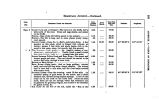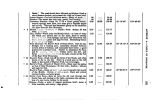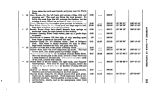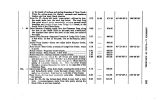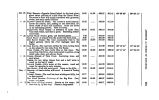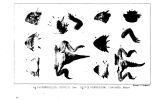| OCR Text |
Show CHIMNEY ROCK. 51 weather into jutting, round abutments and castellated towers. At this point the ridge is two miles wide, very much broken, and the side so steep that it was impossible to keep the saddle while ascending. Descending the north slope, we were guided through a series of narrow and extremely intricate ravines by a well- worn buffalo-trail into the plain below. Before us was the Chimney Bock, a point on this route so well known and so often described. In the strata of clay, sand, sandstones, and siliceous limestones, over which we have been travelling for the last three days, the clay is most predominant in this vicinity and to the eastward of Scott's Bluff. The partial disintegration of these strata has in some places given to the bluffs the most curious shapes, and among others, that of the Chimney Bock. This singular conformation has been, undoubtedly, at one time, a portion ( probably a projecting shoulder) of the main chain of bluffs bounding the valley of the Platte, and has been separated from it by the action of water. It consists of a conical elevation of about one hundred feet high, its sides forming an angle of about 45° with the horizon; from the apex rises a nearly circular and perpendicular shaft of clay, now from thirty- five to forty feet in height. The cone has, I think, been formed by the disintegration of the softer portion of the bluff arranging itself at its natural angle in a conical form, while the remainder of the earth has been carried away by the floods and distributed over the plain, leaving the broad valley which is at present found between it and the main bluff. The Chimney, being composed of more tenacious materials, has been left standing in a vertical position, and has been worn into its present circular form by the gradual action of the elements. That the shaft has been very much higher than at present, is pvident from the corresponding formation of the bluff, as well as from the testimony of all our voyageursj with whom it was for years a landmark or beacon visible for forty or fifty miles, both up and down the river. It is the opinion of Mr. Bridger that it was reduced to its present height by lightning, or some other sudden catastrophe, as he found it broken on his return from one of his trips to St. Louis, though he had passed it uninjured on his way down. Its vicinity has long been a favourite encamping ground for the emigrants, as there are springs of water near and the grass is tolerably good. In crossing over from the valley of Lawrence's Fork, it was noticed that the ridge had been at one time covered with a tolerably dense growth of cedar. These trees have nearly all died, and their trunks are |
































































































































































































































































































































































